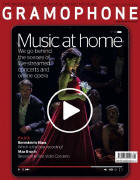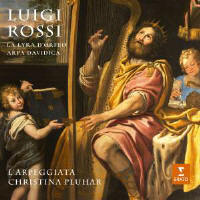Texte paru dans: / Appeared in: |
|
|
Outil de traduction (Très approximatif) |
|
|
Reviewer:
David Vickers This triple album comprises two projects recorded 14 years apart. A few relatively better-known arias and cantatas are interspersed among plenty of bona fide rarities: 20 tracks are flagged as premiere recordings, although half of these are credited as arrangements by the ever-inventive Christine Pluhar and two are anonymous compositions. Whether assorted bits and pieces were designed for courtly music-making in Rome, Paris or elsewhere, they offer a rich perspective on Rossi’s passionate word-setting, dramatic expressiveness and harmonic fantasy. Véronique Gens and L’Arpeggiata recorded La lyra d’Orfeo in 2005 but it languished in the vaults until now. Expressions of desire or heartbreak in ‘Begl’occhi, che dite’ and ‘Questo picciolo rio’ are performed seductively, although the deployment of psaltery in addition to rapturous theorbo, harp, organ and viola da gamba gilds the lily. The lament ‘Se dolente e flebil cetra’ has intertwining violins and cornetto juxtaposed with Gens’s sensual phrasing, while a revolving door of continuo colours is applied with discretion. On the other hand, ‘La bella più bella’ is treated with pizzicato violone bass and improvised plucking aplenty. A sequence from L’Orfeo (Paris, 1647) presents Euridice’s brightly dancelike ‘A l’imperio d’Amore’ (with improvisational cornetto and lively percussion) and exquisite declaration of fidelity ‘Mio ben, teco il tormento’ (the descending four-note ground bass realised lushly); there is also a gorgeous account of Orfeo’s plaint upon losing Euridice (‘Lasciate Averno’). The longest set piece is the spellbinding ‘Lamento di Arione’ – although a sudden downward scale played by organ when Arion jumps into the sea is inadvertently comical. Sessions in 2019 yielded Arpa Davidica. A roster of five singers appear in tandem with an even larger crew of continuo players including two additional harpists (but losing psaltery and percussion in the process), and a mostly different group of string players. Ironic emulations of a cuckoo in ‘Dopo lungo penare’ are delivered wittily by Jakub Józef Orlin´ski. ‘M’uccidete begl’occhi’ is shaded melancholically by Philippe Jaroussky. The canzonetta ‘La gelosia’ demands theatrical fury and virtuoso agility from Valer Sabadus, whose soft limpidity is equally impressive in Orfeo’s grief-stricken ‘Lagrime, dove sete’. Céline Scheen’s steely timbre and contoured exclamations are by turns passionate and pathetic in the anonymous yet beguiling ‘S’era alquanto addormentato’. Bradamante’s poignant lament ‘Sol per breve momento’ and resolute soliloquy ‘Dove mi spingi, Amor’ from Il palazzo incantato (Rome, 1642) are sung emotively and articulately by Giuseppina Bridelli; she conveys trajectories of vulnerability, intimacy and desperation during the ‘Lamento di Olimpia’ and ‘Lamento di Erminia’. Except for an unfettered parody of kitsch cocktail lounge jazz in Sances’s ‘Presso l’onde tranquille’, L’Arpeggiata’s collective music-making tends to be judiciously text-driven, and is always sensuous. Indeed, there has been thoughtful preparation in all respects – from Alessio Ruffatti’s erudite booklet note to the cover illustration of Domenichino’s painting of King David playing the harp (1619) that belonged to Cardinal Mazarin while Rossi was in Paris. Incidentally, the same artist’s frescoes of the life of St Cecilia are in Rome’s San Luigi dei Francesci, where Rossi was organist. |
|




